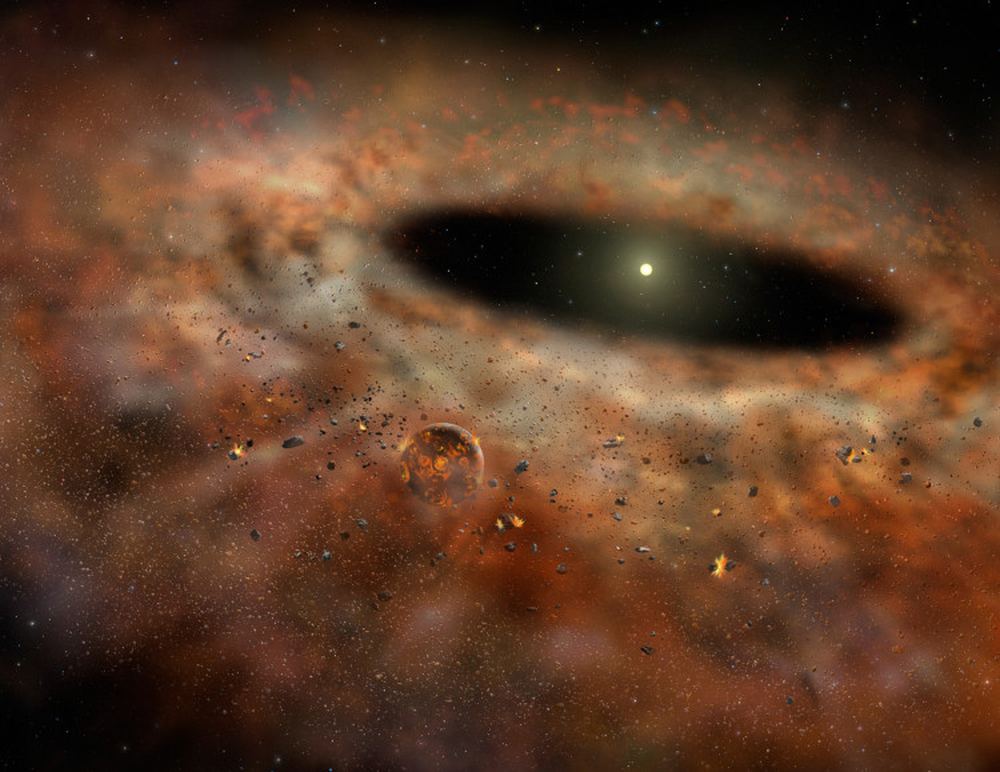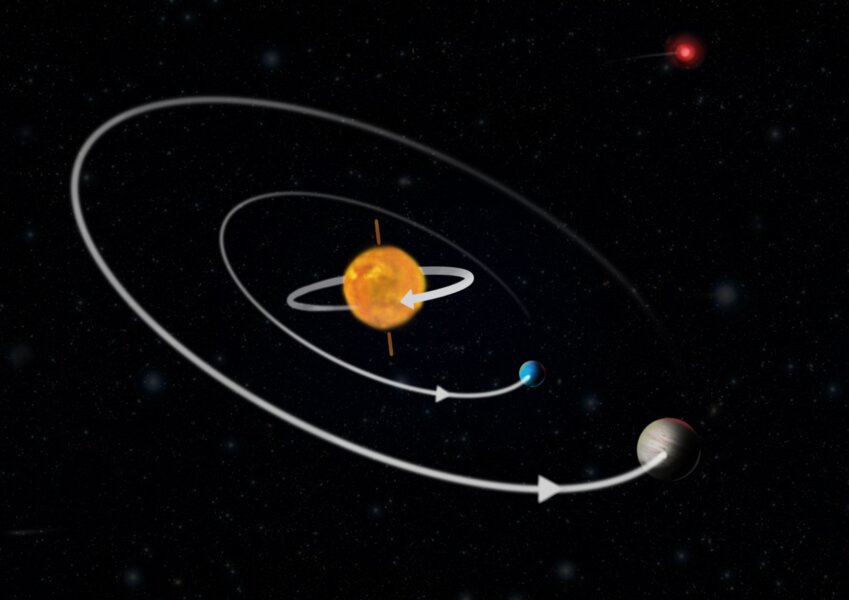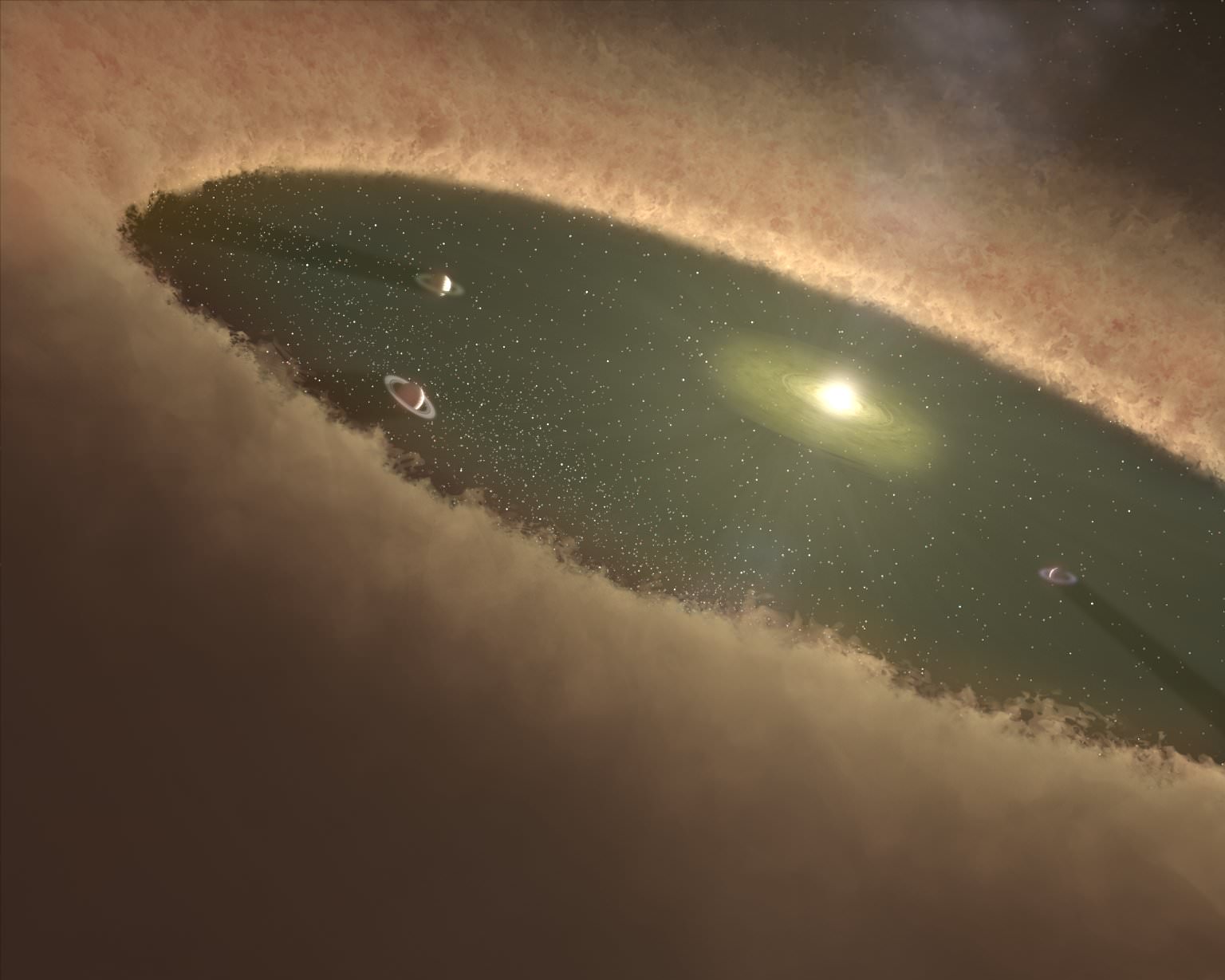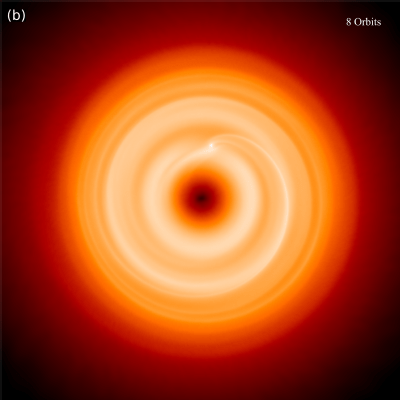Planet formation is notoriously difficult to study. Not only does the process take millions of years, making it impossible to observe in real time, there are myriad factors that play into it, making it difficult to distinguish cause and effect. What we do know is that planets form from features known as protoplanetary disks, which are made up of gas and dust surrounding young stars. And now a team using ALMA have found a star system that has a protoplanetary disk and enough variability to help them nail down some details of how exactly the process of planet formation works.
Continue reading “Astronomers see an Accretion Disk Where Planets are About to Form”Planets may Start Forming Before the Star is Even Finished

Planets form from the accumulation of countless grains of dust swirling around young stars. New computer simulations have found that planets begin forming earlier than previously thought, when a planet’s star hasn’t even finished forming yet.
Continue reading “Planets may Start Forming Before the Star is Even Finished”Young Stars can Evaporate Nearby Disks Before They can Form Planets

Many planetary systems may get snuffed out before they even get a chance to form, according to new research. The culprit: nearby stars, capable of evaporating entire protoplanetary disks just when they begin to form.
Continue reading “Young Stars can Evaporate Nearby Disks Before They can Form Planets”This Exoplanetary System Breaks all the Rules

It’s just like a normal solar system…except completely backwards.
Continue reading “This Exoplanetary System Breaks all the Rules”Astronomers are now Finding Planetary Disks Around the Smallest, Least Massive Stars
Astronomers have been watching planetary systems form around sun-like stars for decades. And now, new observations with the ALMA telescope reveal the same process playing out around the smallest, but most common, stars in galaxy.
Continue reading “Astronomers are now Finding Planetary Disks Around the Smallest, Least Massive Stars”Spiral-shaped Planetary Disks Should Be More Common. Giant Planets Might Be Disrupting Their Formation
Planetary system formation is a process that involves astounding and complex forces. Humans have only just started trying to understand what goes on in this extraordinarily important phase of the development of new worlds. As such, we are continuing to make new discoveries and come up with better models that better fit the observations that our instruments are able to collect.
The most recent of those improved models was announced by a research team at the University of Warwick. A paper in Astrophysical Journal Letters explores possible reasons for why there is a lack of spiral structures in newly formed protoplanetary discs. Their answer is a simple one: massive planets that form on the outside of the disc might be disrupting the spiral formation.
Continue reading “Spiral-shaped Planetary Disks Should Be More Common. Giant Planets Might Be Disrupting Their Formation”Astronomers See a Newly Forming Planetary Disk That’s Continuing to Feed On Material from its Nebula

Over the last few years, astronomers have observed distant solar systems in their early stages of growth. ALMA (Atacama Large Millimeter/submillimeter Array) has captured images of young stars and their disks of material. And in those disks, they’ve spotted the tell-tale gaps that signal the presence of growing young planets.
As they ramped up their efforts, astronomers were eventually able to spot the young planets themselves. All those observations helped confirm our understanding of how young solar systems form.
But more recent research adds another level of detail to the nebular hypothesis, which guides our understanding of solar system formation.
Continue reading “Astronomers See a Newly Forming Planetary Disk That’s Continuing to Feed On Material from its Nebula”Weekly Space Hangout: October 14, 2020, Drs. Jane Huang & Jonathan Williams, Protoplanetary Disks
This week we are joined by Dr. Jane Huang and Dr. Jonathan Willams from the Center for Astrophysics, Harvard & Smithsonian (CfA). Dr. Huang, Dr. Williams, and their team recently discovered some surprising information about the size and shape of some protoplanetary disks.
Continue reading “Weekly Space Hangout: October 14, 2020, Drs. Jane Huang & Jonathan Williams, Protoplanetary Disks”Newly forming star has spiral arms like a tiny galaxy

Protoplanetary disks – where young stars are forming their families of planets – usually form concentric rings of gaps. But astronomers have recently spotted a surprising situation: an adolescent star surrounded by galaxy-like spiral arms.
Continue reading “Newly forming star has spiral arms like a tiny galaxy”Planets Form in Just a Few Hundred Thousand Years

Astronomers like to observe young planets forming in circumstellar debris disks, the rotating rings of material around young stars. But when they measure the amount of material in those disks, they don’t contain enough material to form large planets. That discrepancy has puzzled astronomers.
The answer might come down to timing.
A new study suggests that planets form much quicker than astronomers think.
Continue reading “Planets Form in Just a Few Hundred Thousand Years”


